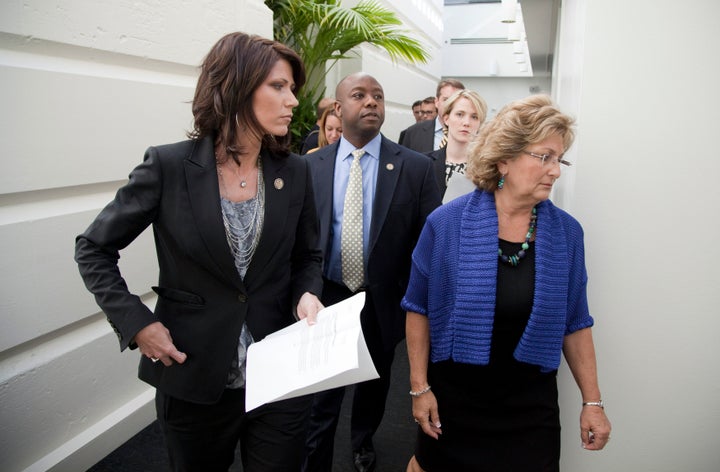
Keeping Republican Ideas Strong Timely And Inventive. Reinventing A New Direction. Protecting Our Republican Team. American Liberty And Nation. Grassroots Initiative to Maintain Our Majority.
Of all the ways that Congress finds to make Americans cringe, the creation of leadership political action committees (PACs) -- campaign finance vehicles that provide yet another avenue for special interest influence and test the furthest limits of the English language with unwieldy acronyms -- may induce the strongest grimaces.
If you haven't put the acronyms above to names yet, they are a few of the new leadership PACs created by GOP freshmen lawmakers. Not halfway through 2011 yet and the 2010 GOP freshmen class has already opened 22 leadership PACs. And two lawmakers each have two PACs, according to Federal Election Commission filings.
The use of PACs by lawmakers has become a near requirement to holding office in recent years. A PAC can accept larger contributions -- a maximum of $5,000 per year -- and contribute larger sums than a normal campaign committee. Leadership PACs provide another source for supporters, including companies and unions with interests before Congress, to donate and provide a big pot of money for lawmakers to share with their colleagues.
Dave Levinthal, a spokesman for the Center for Responsive Politics, a nonprofit that tracks money in politics, tells HuffPost that leadership PACs are formed so that lawmakers "can raise money to push a political agenda or curry favor with their colleagues."
Leadership PACs are often used by lawmakers to build a base within their party by contributing to the election of fellow lawmakers. This helps lawmakers gain stature and helps them earn plum committee spots -- meanwhile giving donors a way around maximum contribution limits, as a dollar given to one member can end up backing a different campaign.
According to the Center for Responsive Politics, leadership PACs received over $40 million in contributions in the 2010 cycle. The top recipients of money were PACs controlled by party leaders, including GOP Reps. Eric Cantor (Va.) and John Boehner (Ohio) and Democratic Reps. Nancy Pelosi (Calif.), Steny Hoyer (Md.), and Jim Clyburn (S.C.).
Many of the freshmen starting leadership PACs are either in the leadership circle already or are popular new faces in the Republican Party. Reps. Kristi Noem (S.D.), Tim Scott (S.C.) and Jeff Denham (Calif.), all with leadership PACs, are part of the House leadership team. Rep. Allen West (Fla.) is a star in the GOP's Tea Party wing.
Across the Capitol, Republican Sens. Scott Brown (Mass.), Dan Coats (Ind.), Rob Portman (Ohio), Rand Paul (Ky.), Kelly Ayotte (N.H.), and Mike Lee (Utah) have all started their own leadership PACs.
The House Financial Services Committee, a well-known feeding ground for money-hungry lawmakers, is the most represented committee among GOP freshmen with PACs and includes Reps. Robert Hurt (Va.), Dave Schweikert (Ariz.), Jim Renacci (Ohio), and Michael Grimm (N.Y.). The campaign committees of these four lawmakers have all received an inordinate amount of contributions from financial PACs. Now those financial PACs, some of the biggest donors to Congress, have another avenue to contribute to new committee members overseeing their industry. Republicans, as well as Democrats, place vulnerable members on the committee so they can raise funds from the industry the panel oversees.
The most recent PACs were started by Schweikert and Grimm; the second PAC, started by Lee, is dubbed the Constitutional Conservatives Fund.
Freshmen Democrats, of which there are few, have created three leadership PACs. They were opened by Rep. John Garamendi (Calif.) and Sens. Michael Bennet (Colo.) and Chris Coons (Del.).
